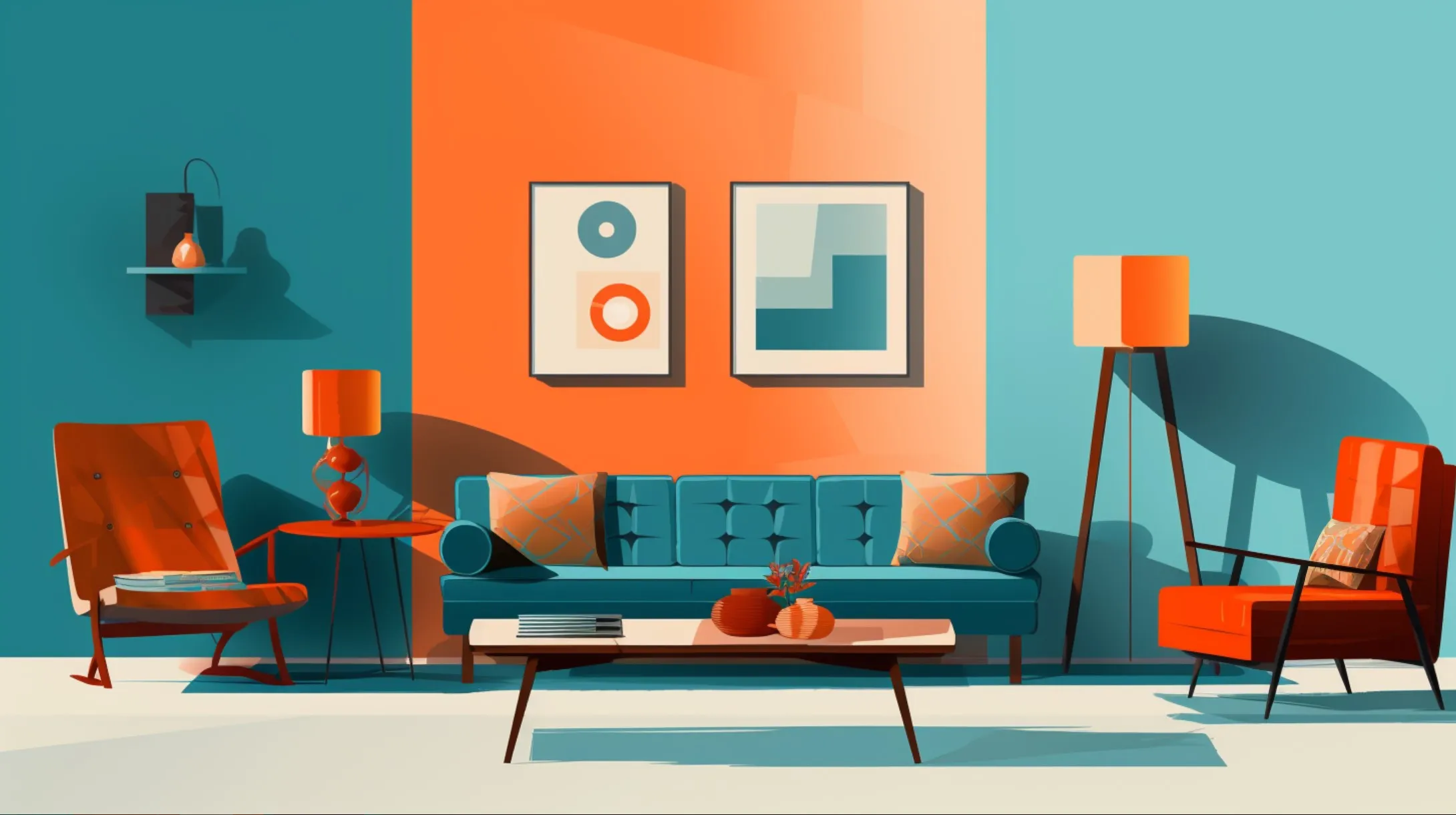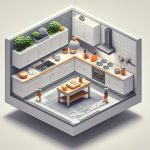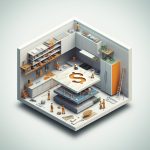So, you’re dreaming of transforming your four-bedroom house in Kenya into a stylish haven? That’s fantastic! But before you dive into the exciting world of interior design, it’s essential to understand the costs involved. This comprehensive guide will walk you through the factors that influence interior design fees in Kenya, empowering you to create a budget that aligns with your vision and financial comfort.
Understanding Interior Design Costs in Kenya
Just like choosing the perfect outfit, interior design costs in Kenya vary depending on your desired style, materials, and project scope. Let’s break down the price range and the key factors that influence it.
Getting a Grip on the Price Range
Hiring an interior designer in Kenya is an investment that can range from basic services to comprehensive design and furnishing solutions. Here’s a general idea of what to expect:
- Basic Services: You can find interior design services starting from Ksh 700 to 1,200 per square foot. This usually covers consultations, space planning, and basic design recommendations.
- Design and Furniture: For a more comprehensive approach, including design, furniture selection, and project management, be prepared to budget between Ksh 1,500,000 to 2,000,000 on average for a single room.
Building a House in Kenya:
- 4-Bedroom House: Constructing a beautiful 4-bedroom house in Kenya can cost anywhere between Ksh 3.5 million to 6 million, depending on the size, design complexity, and materials used.
- 2-Bedroom House: A cozy 2-bedroom house, on the other hand, might range from Ksh 600,000 to 2 million.
Why the Price Tag Changes Like the Weather
Interior design costs are as diverse as the Kenyan landscape itself. Several factors contribute to this variation:
- Project Size: Just as a larger cake requires more ingredients, a bigger design project involves more materials, labor, and time, leading to higher costs.
- Designer’s Experience: A seasoned interior designer brings a wealth of experience, expertise, and potentially access to exclusive materials and artisans. Their skills and knowledge often come at a premium.
- Materials: From luxurious marble countertops to budget-friendly laminate options, the materials you choose significantly impact the overall cost. Premium materials naturally come with a higher price tag.
- Location: Interior design costs, like real estate, are influenced by location. Expect to pay a premium in major cities like Nairobi compared to smaller towns.
Becoming an Interior Design Budget Guru
Don’t let the fluctuating costs intimidate you! Here’s a step-by-step guide to help you estimate your interior design project cost:
- Measure Your Space: Grab your measuring tape and accurately determine the square footage of the areas you want to redesign.
- Define Your Project: Are you envisioning a complete overhaul or a simple refresh? Clearly defining your project scope helps you plan and communicate your needs to designers.
- Set a Realistic Budget: Before contacting designers, decide on a budget you’re comfortable with. This will guide your decisions and prevent overspending.
- Do Your Research: Explore different designers in your area, browse their portfolios, and inquire about their fees and pricing structures.
- Get Quotes: Reach out to several designers and request detailed quotes based on your specific project requirements and budget. This allows you to compare and choose the best value.
Factors Influencing 4-Bedroom Interior Design Costs in Kenya
When it comes to designing your four-bedroom haven in Kenya, several key factors influence the overall cost:
- Location: Urban areas generally have higher costs for design services, materials, and labor due to factors like higher living expenses and demand.
- House Design: The architectural style, size, and layout of your home play a crucial role. A sprawling mansion with intricate details will naturally require more materials and specialized labor than a compact, modern design.
- Materials: The quality and type of materials you choose for flooring, countertops, cabinetry, paint, and furniture significantly impact the overall budget.
- Professional Fees: Hiring a professional interior designer adds to the upfront cost but can save you money in the long run. Designers bring expertise in space planning, material selection, and project management, ensuring a cohesive and aesthetically pleasing result.
Cost Ranges for Interior Design in Kenya:
- Basic Design (Kshs 1,000 – 2,500 per square foot): This budget-friendly option prioritizes functionality and practicality, using affordable materials and a straightforward design approach.
- Mid-Range Design (Kshs 2,500 – 5,000 per square foot): This tier strikes a balance between style and affordability, allowing for higher-quality materials, attention to detail, and a design that reflects your taste.
- High-End Design (Kshs 5,000 – 10,000 per square foot): This level caters to luxury living, featuring custom-made furniture, imported materials, statement lighting, and meticulous craftsmanship.
Don’t Forget:
- Sustainable Design: Investing in energy-efficient appliances, eco-friendly materials, and sustainable practices may have a higher upfront cost but can lead to significant long-term savings on utility bills and benefit the environment.
- Personal Touches: Your home should be a reflection of you. Don’t be afraid to incorporate personal touches, family heirlooms, or DIY projects to add character and warmth without breaking the bank.
Popular Interior Design Styles and Their Cost Implications
Choosing an interior design style for your four-bedroom home is an exciting endeavor! Each style has its own unique charm and cost implications.
Finding Your Dream Style
Explore various design styles, from classic to contemporary, to discover what resonates with you. Consider:
- Traditional: Characterized by elegant details, rich colors, and classic furniture pieces.
- Modern: Known for clean lines, functionality, and a minimalist aesthetic.
- Contemporary: Reflects current design trends and often incorporates elements from different styles.
- Transitional: Blends traditional and modern elements for a timeless and sophisticated look.
- Farmhouse: Inspired by rustic country living, featuring cozy textures, natural materials, and vintage accents.
- Industrial: Draws inspiration from factories and warehouses, using exposed brick, metal accents, and raw finishes.
Cost Implications: From Budget-Friendly to Luxe
The cost of achieving your desired style can vary based on:
- Design Complexity: Intricate details, custom features, and unique layouts typically require more specialized labor and materials, increasing costs.
- Materials: High-end materials like marble, hardwood, and designer fabrics significantly impact the budget compared to more affordable alternatives.
- Furnishings: Antique pieces, designer furniture, and custom-made items come at a premium, while sourcing from local artisans or opting for vintage finds can be more budget-friendly.
Trending Styles and Smart Spending Tips
- Biophilic Design: This popular trend focuses on connecting with nature by incorporating natural light, plants, and organic materials, creating a calming and healthy living environment.
- Mixed Metals: Combining different metal finishes, like brass and black matte, adds visual interest and a touch of sophistication.
Saving Money Without Sacrificing Style:
- Prioritize Spaces: Focus on designing the rooms you use most frequently.
- Negotiate: Don’t hesitate to discuss your budget with designers and explore options for cost savings.
- DIY Projects: Tackle smaller projects like painting, tiling, or refinishing furniture to save on labor costs.
- Shop Around: Compare prices for materials, furniture, and services from different vendors to ensure you’re getting the best value.
Ready to Create Your Dream Home?
Designing your four-bedroom home in Kenya should be a fulfilling and enjoyable experience. By understanding the factors that influence costs, exploring different design styles, and adopting smart spending strategies, you can create a space that reflects your style and budget.
For More Inspiration:
- Browse our collection of small 2 bedroom cottage house plans for cozy and charming design ideas.
- Discover the ideal house pool size average to create a relaxing backyard oasis.
- Explore our comprehensive Kenya Interior Design Cost Guide for detailed insights.
- Learn more about interior design costs in Kenya and how to manage your budget effectively.
- White Kitchen With Butcher Block Countertops: A Warm, Inviting Design - January 4, 2026
- Marble Countertops Prices: What Impacts the Overall Cost to Install? - January 3, 2026
- Marble Countertops Cost: What Factors Impact the Total Price? - January 2, 2026










